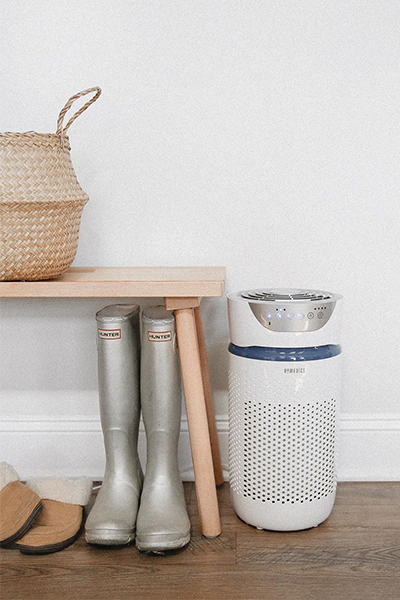How Air Purifiers Help —and How to Choose the Right Features
It’s tough to tell when your indoor air quality is lacking. Even if you notice a bad smell in your home, your nose isn’t always a trustworthy indicator of clean air. So how can you tell if your air quality needs an attitude adjustment? Here are some easy-to-read indicators of poor air quality:
You sneeze —a lot. Airborne particles including pollen, pet dander, smoke, and dust can turn mild allergies into nuisances. One of the biggest allergens is caused by dust mites, a microscopic insect related to ticks, fleas, and spiders. Its waste, rather than the insect itself, is the trigger. When these particles become airborne, they circulate through the air, odor-free. You probably can’t see them —but if they’re in the air, you can breathe them in. And that’s when they become a problem.
You get stuffed up. Allergens do more than make us sneeze. They can create nasal congestion, a major obstacle in breathing freely. During waking hours, most of us simply reach for a tissue to clear our sinuses. At night, however, we may wake up a few times because we’re having trouble breathing. And that can keep us from getting a good night’s sleep.
Stale air. Maybe you’re not sneezing, but the air in your home or office seems stale. This can happen during the dead of winter, when it’s too cold to open a window but you feel like you need a little air circulation. Stale air is a combination of low humidity levels, cooking and pet odors, cleaning products, and airborne allergens that build up over time.
You use cleaning products. So what else is in the air? Cleaning products such as disinfectants, varnishes, adhesives, and even living room carpet can emit volatile organic compounds (VOCs). Look for items such as formaldehyde or Toluene on product labels —they’re toxic to the air quality in your home. Carpeting can also hold dust, absorbing it deep into the fibers. Every time you walk across the carpet, or clean using a filterless vacuum, you can stir those back up into the air.

Air purifiers can be a great solution, especially if you’re concerned about allergens. For example, high-efficiency particulate air (HEPA) filters trap airborne particles by pushing air through a densely woven group of fibers. The air purifier then circulates fresh air out of the filter. True HEPA filtration can reduce airborne particulates as small as .03 microns —a great advantage if you’re an allergy sufferer.
Active carbon filters are great for removing VOCs from the air. Instead of using fibers to trap particles, this filtration method relies on using activated carbon beds to draw in volatile gases. The gases chemically bond to the activated carbon, rendering them harmless. Many systems use both filtration types and require timely filter replacements to keep your system working smoothly. Some models even offer a filter replacement reminder light that lets you know when it’s time to replace your filters.
Air purifiers do more than simply filter the air. Models with UV-C technology help sanitize the air as well by reducing germs.
UV light purifiers shine UV light directly onto bacteria, viruses, and other types of germs. This type of bright light exposure damages the cellular structure of microscopic contaminants, causing them to die off. Meanwhile, air purifiers that feature an ionizer will send out negatively charged ions that aid in the purification process.
PetPlus odor filtration means pet odors and allergens go in and clean, fresh-smelling air comes out. No more litter box smells, wet dog odors, or other unpleasant reminders are left behind, meaning you can enjoy more of your pets’ love without the side effects.
Homedics offers a complete line of air purifiers that can help you remove airborne contaminants —everything from pet hair, allergens, and pollen to dust, smoke, and other unpleasant odors —and create a more comfortable environment in every room.
Air filters and purifiers come in all sizes. There are desktop models ideal for an office or work area, and larger versions designed specifically for large living areas or small bedrooms. Be sure to select one that is the right size for your space, to help you experience better air quality, better sleep, and an improved sense of well-being.
Medical Disclaimer: This content is provided for informational purposes only and not intended to be a substitute for professional medical advice, diagnosis or treatment.

